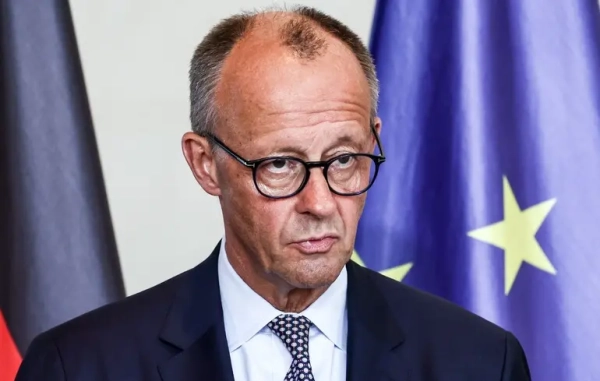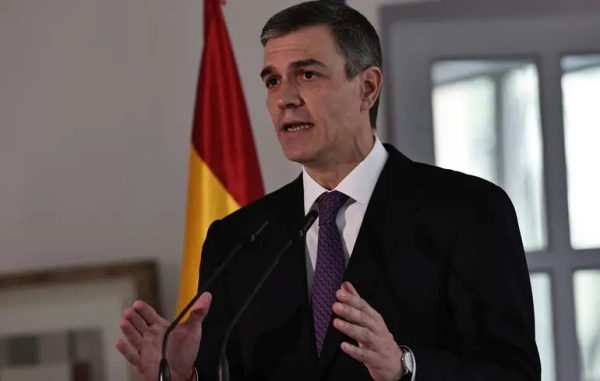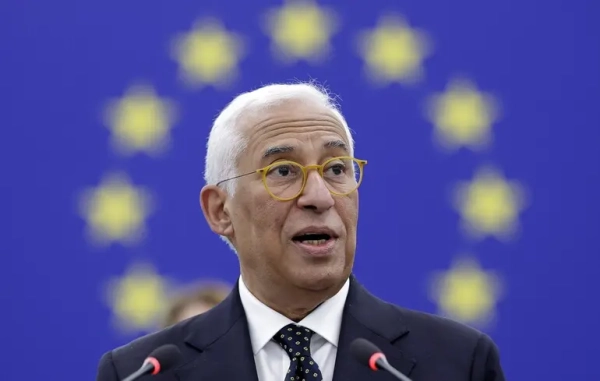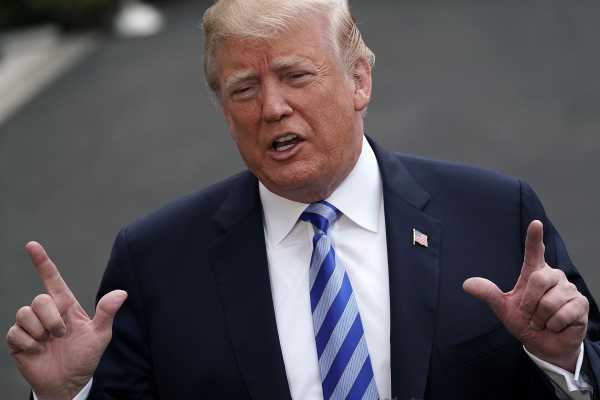
President Donald Trump begrudgingly signed a $1.3 trillion funding package to keep the government open through September earlier this year, saying he would “never sign another bill like this again.” Now, he’s set to use an obscure law to call on Congress to cut $15 billion from old spending accounts, senior administration officials confirmed.
The White House is set to request a rescission package this week, asking Congress to rescind funds previously allocated by Congress and signed into law — the first installment in what’s expected to become a larger Trump administration push to clamp down on big government spending. This time, however, Trump’s request won’t touch the recently passed $1.3 trillion omnibus spending bill that the president was so irate over. Instead, it will slash spending from domestic programs that was appropriated years ago and hasn’t been spent yet. Ironically, it’s unlikely to have much of an impact on the deficit at all.
The package will include cuts to funding that has been dormant for several years, like $7 billion from the Children’s Health Insurance Program, $5 billion of which has expired and cannot be spent and $2 billion from a contingency fund the administration says will be unnecessary; $800 million from the Center for Medicare & Medicaid Innovation program; $107 million from funding for Hurricane Sandy relief, that requires local communities to match the dollars; money allocated for the Ebola outbreak; and several grants. Administration officials said they find the package uncontroversial and expect it to pass the House. The prospects in the Senate are more uncertain, and the proposal has already been met with some criticism.
Once the request has been made, Congress will have 45 days to act on the president’s call before it expires. During that time, the funding is automatically frozen. If the package does get a vote, it will only require a simple majority to pass. But even if this request isn’t as significant as the administration’s initial calls for massive spending cuts, it still won’t be easy to get it passed. Already, several senators have dismissed relitigating spending. The last president to successfully get Congress to cut spending through rescission was Bill Clinton.
The push, trumpeted by Office of Management and Budget Director Mick Mulvaney, a former House Freedom Caucus member and major deficit hawk, comes after a major tax cut push and a massive spending bill that the Congressional Budget Office estimates will increase the national debt by $11.7 trillion over the next 10 years.
Trump himself has fluctuated between making big spending asks and mimicking conservative deficit hawks’ gripes about wasteful government spending. Even the most Trump-loving conservatives cite government spending as one of the major differences between Trump and the right wing of the party. For now, he’s messaging with the deficit hawks.
Rescission packages, explained
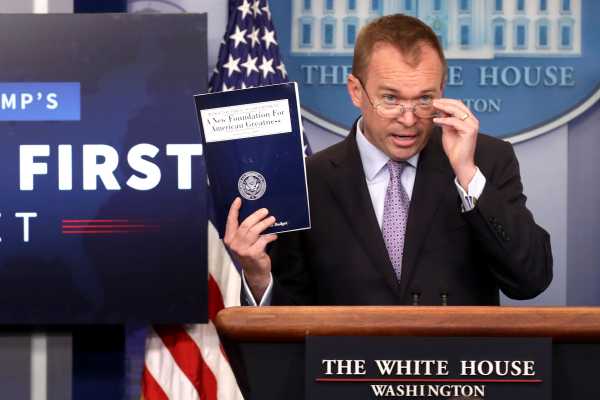
Talk of a rescission package began after Congress put a $1.3 trillion bipartisan spending bill on Trump’s desk that drastically increased military spending and funding for domestic programs. Trump, echoing concerns from the right, threatened to veto the whole thing and shut down the government. He ultimately didn’t, but he made very clear that he wasn’t pleased about the deal.
“There are a lot of things I am unhappy about,” Trump said, calling for an end to the Senate filibuster, which gave Democrats, who control 49 Senate seats, leverage over spending negotiations and a line-item veto (which would be unconstitutional).
So Mulvaney, who’s in charge of the nation’s budget, cooked up a plan to push Congress to make spending cuts while also getting around the Senate filibuster: presidential rescission.
The process was established in 1974 under the Congressional Budget and Impoundment Control Act, designed to slow down Richard Nixon’s impoundment of (refusal to spend) tens of billions of dollars. Nixon was effectively eliminating programs he didn’t want by simply refusing to spend the money Congress appropriated for it, censuring lawmakers for contributing to inflation and huge deficits.
The presidential rescission process was supposed to put additional congressional controls around impoundment. It gives Trump the power to delay spending and requires Congress to act to actually reduce it, as the Committee for a Responsible Federal Budget explained:
In other words, the president can reduce or eliminate funding for any individual programs, as long as it has the approval of a simple majority of Congress.
The presidential rescission process hasn’t been used since 2000, under Clinton. But before then, it was pretty commonplace. “Between fiscal years 1974 and 2000, presidents proposed rescissions totaling $76 billion for every fiscal year except 1988, of which Congress accepted $25 billion,” CRFB writes.
And as the Bipartisan Policy Center’s senior vice president Bill Hoagland writes, “while it is unusual for a president to seek a rescission, Congress itself regularly does rescission packages” annually, usually to ensure unused funding can be reallocated to other programs.
Because this first rescission package from Trump doesn’t really impact money that’s set to be spent, and instead just takes dormant funding off the books, it’s unlikely to have a major effect on the deficit. But not all the funding has expired or can’t be used. For example $2 billion of the CHIP funding on the cutting board in the proposal is for a contingency fund. And the $107 million Hurricane Sandy relief money needs a local match to be spent. Nevertheless, senior officials say Trump’s rescission package is different from Congress’s in that it won’t be used to “justify higher spending” elsewhere.
Once Trump formally makes the request, Congress has 45 days to address the proposed cuts. It’s first addressed by the House and Senate appropriations committees and then brought up for a vote. It only requires a simple majority to pass. If Congress fails to act on the request within the 45 days, or votes down the proposal, then the executive branch is required to spend the funds as allocated — and the president isn’t allowed to propose the rescission again.
Conservatives haven’t been happy with how government spending has gone under Trump. This won’t make too much a difference.
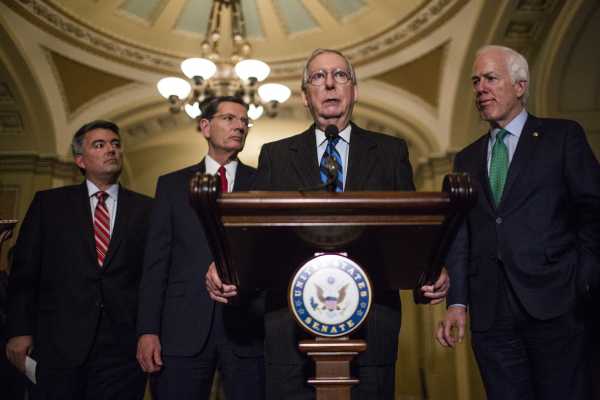
When it comes to bipartisan pieces of legislation, like government spending, conservative lawmakers usually get rolled, even with Republicans in control of both chambers of Congress and Trump in the White House,
With the last omnibus, it didn’t take long for the Freedom Caucus, a group of the House’s most conservative lawmakers, to come out against the bill. In a statement less than an hour after the bill was released, they called it an “insult to America’s taxpayers, as well as their many rank-and-file representatives who had no say in the omnibus negotiations.”
The Heritage Foundation, one of Washington’s leading conservative think tanks, had a similar sentiment, tweeting that the omnibus was an “embarrassing rundown of broken promises.” Tennessee Sen. Bob Corker, a deficit hawk, called it “grotesque,” and Louisiana Sen. John Kennedy took it one step further, saying the bill was a “great-dane-sized whiz down the leg of every taxpayer in this country.”
Their reactions are no surprise. Both omnibus spending packages passed under Trump (for fiscal years 2017 and 2018) have been a far cry from conservatives’ calls for small government, and almost every contentious conservative policy provision has been tossed out, including defunding Planned Parenthood and sanctuary cities.
And while Trump himself has been wishy-washy in his dedication to fiscal conservatism, grasping to the talking point only when it affords him an opportunity to attack Democrats, his administration consists of many fiscal hawks, like Mulvaney. Trump called March’s spending negotiations a “ridiculous situation,” and censured Democrats for “wasting” money on domestic programs, and many expect more rescission requests to come in this year.
The administration says this first proposal will aim to help taxpayers, and note it is the least controversial, as it does not touch 2018 spending and only cuts funding that “wouldn’t have been spent.” They are planning additional rescission packages that will, officials said.
But as Georgetown University law professor David Super explains, in trying to make this proposal uncontroversial, the administration is actually contradicting its own messaging:
Regardless, when it comes to Congress actually approving Trump’s rescission packages, the Senate might still be an uphill battle — even among Republicans. Already, several Republican Senate appropriators have thrown cold water on the idea of reopening past spending fights.
That idea is “going nowhere,” South Carolina Sen. Lindsey Graham told Roll Call of the suggestion.
Sourse: vox.com
